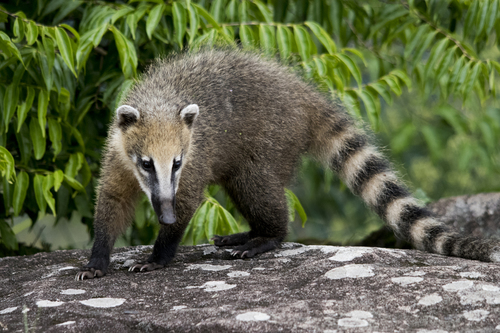
South American coati
The South American coati (Nasua nasua) is a lively, social creature with a distinctive long snout and ringed tail. Found in South America's forests and grasslands, these omnivores play a vital role in seed dispersal. Their curious nature and banded lifestyle make them a unique and engaging sight.
8-15 years
Lifespan
45359.0 kg
Weight
Brown, Grey, Red, Black, White, Tan
Color
15 mph
Top Speed
Least Concern
Conservation Status
Decreasing
Population Trend
Characteristics
Nasua nasua, commonly known as the South American coati, is a member of the raccoon family. It inhabits tropical forests, savannas, and grasslands across South America. Notable for its long snout and tail, coatis are social animals, often found in bands. They are omnivorous, feeding on fruits, insects, and small mammals.
Distribution Range of the South American coati
Nasua nasua, commonly known as the South American coati or ring-tailed coati, is native to South America. Its geographical distribution includes countries such as Argentina, Bolivia, Brazil, Colombia, Ecuador, Paraguay, Peru, Uruguay, and Venezuela. The species is also found in the forested regions of the Amazon basin and the tropical and subtropical areas of the continent.
South American coati's Habitat
Environmental Conditions
The South American coati typically inhabits tropical and subtropical forests, including rainforests, dry forests, and scrub forests. It can also be found in savannas and grasslands. The coati prefers environments with dense vegetation, which provides cover and abundant food resources. These areas usually have a warm climate with high humidity, although the species is adaptable to various altitudes and can be found from sea level to mountainous regions.
Ecological Niche
Nasua nasua is an omnivorous species that plays a crucial role in its ecosystem. It feeds on a variety of foods, including fruits, insects, small vertebrates, and eggs. The coati's foraging behavior helps in seed dispersal, contributing to forest regeneration. It is a diurnal animal, meaning it is active during the day, and it is known for its social behavior, often forming bands consisting of females and their young. Males are typically solitary except during the breeding season.
Copyright @ Nature Style Limited. All Rights Reserved.
 English
English